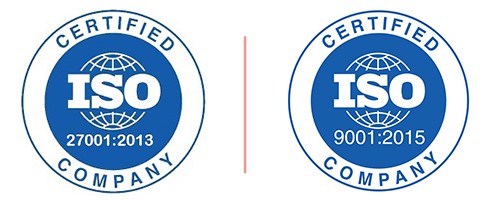- +81-5050505761
- [email protected]
The global ECG patch and Holter monitor market size was US$ 1158.5 million in 2021. The global ECG patch and Holter monitor market size is forecast to reach US$ 6205.9 million by 2030, growing at a compound annual growth rate (CAGR) of 20.5% during the forecast period from 2022 to 2030.
Holter monitors are small, wearable devices that track heart rhythms. It sends tiny electrical signals from the heart to the surface of the chest. Such devices help identify heart problems. This device detects several types of arrhythmias like atrial fibrillation, tachycardia, and atrial flutter. An electrocardiogram (ECG) Holter monitoring device is a portable, ambulatory device used to monitor heart activity. A patient wears a sleeve around their neck or a belt around their waist that contains electrodes and small equipment.
Factors Influencing Market Growth
Impact Analysis of COVID-19
Globally, COVID-19 had a relatively positive impact on the market. This was due to the increasing use of the device in the diagnosis, evaluation, and treatment of cardiac conditions. Furthermore, patients who undergo rhythm monitoring therapy are at an increased risk for developing more severe diseases. With the COVID-19 effects on individuals with cardiac care, ECG patch and Holter monitor devices were in demand as consumers were concerned about their health. This has led to positive growth for the ECG patch and Holter monitor market.
Regional Insights
North America held the largest market share in 2021. As a result of the rising incidence of Atrial fibrillation (AFib) in the region, population aging, technological advancements, and shifting patient preferences toward ambulatory ECG monitoring. Additionally, the launch of next-generation wireless devices for monitoring ECGs and technology collaborations among manufacturers are driving the region's market growth.
Asia Pacific is forecast to have the highest CAGR during the forecast period. Growing geriatric populations, widespread cardiovascular diseases (CVDs), rising disposable incomes, and growing healthcare infrastructure are driving the market.
Leading Competitors
The leading prominent companies profiled in the global ECG patch and Holter monitor market are:
Scope of the Report
The global ECG patch and Holter monitor market segmentation focus on Product, Application, End-Use, and Region.
Segmentation based on Product
Segmentation based on Application
Segmentation based on End-Use
Segmentation based on Region
[TABLE OF CONTENTS]
1 INTRODUCTION OF GLOBAL ECG PATCH & HOLTER MONITOR MARKET
1.1 OVERVIEW OF THE MARKET
1.2 SCOPE OF REPORT
1.3 ASSUMPTIONS
2 EXECUTIVE SUMMARY
3 RESEARCH METHODOLOGY
3.1 DATA MINING
3.2 VALIDATION
3.3 PRIMARY INTERVIEWS
3.4 LIST OF DATA SOURCES
4 GLOBAL ECG PATCH & HOLTER MONITOR MARKET OUTLOOK
4.1 OVERVIEW
4.2 MARKET DYNAMICS
4.2.1 DRIVERS
4.2.2 RESTRAINTS
4.2.3 OPPORTUNITIES
4.3 PORTERS FIVE FORCE MODEL
4.4 VALUE CHAIN ANALYSIS
5 GLOBAL ECG PATCH & HOLTER MONITOR MARKET, BY PRODUCT
5.1 OVERVIEW
5.2 ECG PATCH
5.3 PORTABLE HOLTER
6 GLOBAL ECG PATCH & HOLTER MONITOR MARKET, BY APPLICATION
6.1 OVERVIEW
6.2 DIAGNOSTICS
6.3 MONITORING
7 GLOBAL ECG PATCH & HOLTER MONITOR MARKET, BY END-USER
7.1 OVERVIEW
7.2 HOSPITALS & CLINICS
7.3 AMBULATORY FACILITIES
7.4 OTHERS
8 GLOBAL ECG PATCH & HOLTER MONITOR MARKET, BY GEOGRAPHY
8.1 OVERVIEW
8.2 NORTH AMERICA
8.2.1 NORTH AMERICA MARKET SNAPSHOT
8.2.2 U.S.
8.2.3 CANADA
8.2.4 MEXICO
8.3 EUROPE
8.3.1 EUROPE MARKET SNAPSHOT
8.3.2 WESTERN EUROPE
8.3.2.1 THE UK
8.3.2.2 GERMANY
8.3.2.3 FRANCE
8.3.2.4 ITALY
8.3.2.5 SPAIN
8.3.2.6 REST OF WESTERN EUROPE
8.3.3 EASTERN EUROPE
8.3.3. 1 POLAND
8.3.3.2 RUSSIA
8.3.3.3 REST OF EASTERN EUROPE
8.4 ASIA PACIFIC
8.4.1 ASIA PACIFIC MARKET SNAPSHOT
8.4.2 CHINA
8.4.3 JAPAN
8.4.4 INDIA
8.4.5 AUSTRALIA & NEW ZEALAND
8.4.6 ASEAN
8.4.7 REST OF ASIA PACIFIC
8.5 MIDDLE EAST & AFRICA
8.5.1 MIDDLE EAST & AFRICA MARKET SNAPSHOT
8.5.2 UAE
8.5.3 SAUDI ARABIA
8.5.4 SOUTH AFRICA
8.5.5 REST OF MEA
8.6 SOUTH AMERICA
8.6.1 SOUTH AMERICA MARKET SNAPSHOT
8.6.2 BRAZIL
8.6.3 ARGENTINA
8.6.4 REST OF SOUTH AMERICA
9 GLOBAL ECG PATCH & HOLTER MONITOR MARKET COMPETITIVE LANDSCAPE
9.1 OVERVIEW
9.2 COMPANY MARKET RANKING
9.3 KEY DEVELOPMENT STRATEGIES
10 COMPANY PROFILES
10.1 NISSHA MEDICAL TECHNOLOGIES
10.1.1 OVERVIEW
10.1.2 FINANCIAL PERFORMANCE
10.1.3 PRODUCT OUTLOOK
10.1.4 KEY DEVELOPMENTS
10.2 MEDTRONIC PLC
10.2.1 OVERVIEW
10.2.2 FINANCIAL PERFORMANCE
10.2.3 PRODUCT OUTLOOK
10.2.4 KEY DEVELOPMENTS
10.3 HILL-ROM SERVICES, INCORPORATED
10.3.1 OVERVIEW
10.3.2 FINANCIAL PERFORMANCE
10.3.3 PRODUCT OUTLOOK
10.3.4 KEY DEVELOPMENTS
10.4 IRHYTHM TECHNOLOGIES, INCORPORATED
10.4.1 OVERVIEW
10.4.2 FINANCIAL PERFORMANCE
10.4.3 PRODUCT OUTLOOK
10.4.4 KEY DEVELOPMENTS
10.5 ALIVECOR, INCORPORATED
10.5.1 OVERVIEW
10.5.2 FINANCIAL PERFORMANCE
10.5.3 PRODUCT OUTLOOK
10.5.4 KEY DEVELOPMENTS
10.6 CARDIAC INSIGHT INCORPORATED
10.6.1 OVERVIEW
10.6.2 FINANCIAL PERFORMANCE
10.6.3 PRODUCT OUTLOOK
10.6.4 KEY DEVELOPMENTS
10.7 VITALCONNECT
10.7.1 OVERVIEW
10.7.2 FINANCIAL PERFORMANCE
10.7.3 PRODUCT OUTLOOK
10.7.4 KEY DEVELOPMENTS
10.8. LIFESIGNALS, INCORPORATED
10.8.1 OVERVIEW
10.8.2 FINANCIAL PERFORMANCE
10.8.3 PRODUCT OUTLOOK
10.8.4 KEY DEVELOPMENTS
10.9 BARDY DIAGNOSTICS, INCORPORATED
10.9.1 OVERVIEW
10.9.2 FINANCIAL PERFORMANCE
10.9.3 PRODUCT OUTLOOK
10.9.4 KEY DEVELOPMENTS
10.10 NASIFF ASSOCIATES, INCORPORATED
10.10.1 OVERVIEW
10.10.2 FINANCIAL PERFORMANCE
10.10.3 PRODUCT OUTLOOK
10.10.4 KEY DEVELOPMENTS
10.11 MIDMARK CORPORATION
10.11.1 OVERVIEW
10.11.2 FINANCIAL PERFORMANCE
10.11.3 PRODUCT OUTLOOK
10.11.4 KEY DEVELOPMENTS
10.12 LIEF THERAPEUTICS, INCORPORATED
10.12.1 OVERVIEW
10.12.2 FINANCIAL PERFORMANCE
10.12.3 PRODUCT OUTLOOK
10.12.4 KEY DEVELOPMENTS
10.13 SCHILLER AG
10.13.1 OVERVIEW
10.13.2 FINANCIAL PERFORMANCE
10.13.3 PRODUCT OUTLOOK
10.13.4 KEY DEVELOPMENTS
10.14 NIHON KOHDEN CORPORATION
10.14.1 OVERVIEW
10.14.2 FINANCIAL PERFORMANCE
10.14.3 PRODUCT OUTLOOK
10.14.4 KEY DEVELOPMENTS
10.15 KONINKLIJKE PHILIPS N.V.
10.15.1 OVERVIEW
10.15.2 FINANCIAL PERFORMANCE
10.15.3 PRODUCT OUTLOOK
10.15.4 KEY DEVELOPMENTS
10.16 GE HEALTHCARE
10.16.1 OVERVIEW
10.16.2 FINANCIAL PERFORMANCE
10.16.3 PRODUCT OUTLOOK
10.16.4 KEY DEVELOPMENTS
10.17 FUKUDA DENSHI CO.
10.17.1 OVERVIEW
10.17.2 FINANCIAL PERFORMANCE
10.17.3 PRODUCT OUTLOOK
10.17.4 KEY DEVELOPMENTS
10.18 SPACELABS HEALTHCARE (SUBSIDIARY OF OSI SYSTEMS, INC.)
10.18.1 OVERVIEW
10.18.2 FINANCIAL PERFORMANCE
10.18.3 PRODUCT OUTLOOK
10.18.4 KEY DEVELOPMENTS
01
お客様のニーズに合わせてレポートをカスタマイズ可能
02
ベテランの市場調査員による専門的な分析
03
安全で簡単に利用できるオンライン決済方法
04
お客様のご要望に応じて、特定の章を購入することができます。
05
すべてのレポートに専門的な日本語翻訳を提供
06
包括的でわかりやすいレポートを迅速にお届けします。
07
購入後も継続的なサポートとアップデートが受けられます。

We Accept

Copyright ©2022 All rights reserved